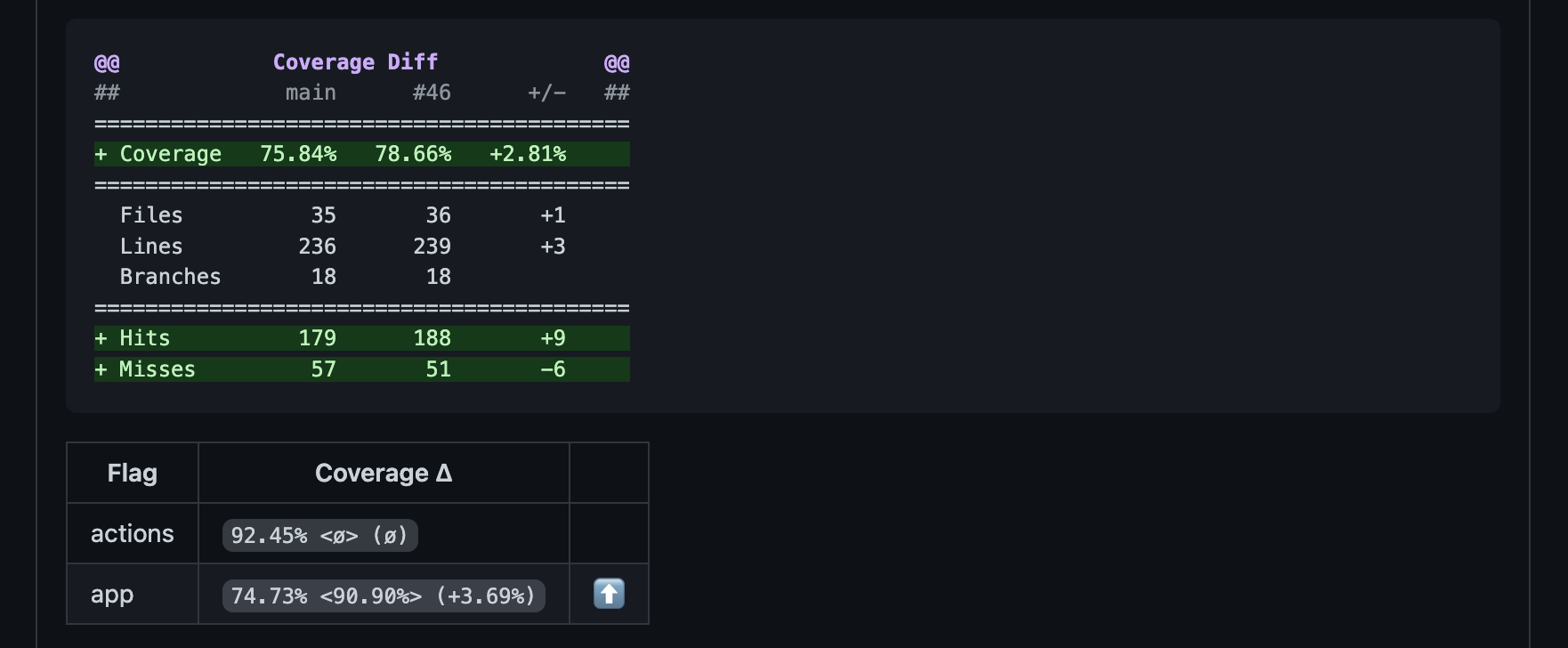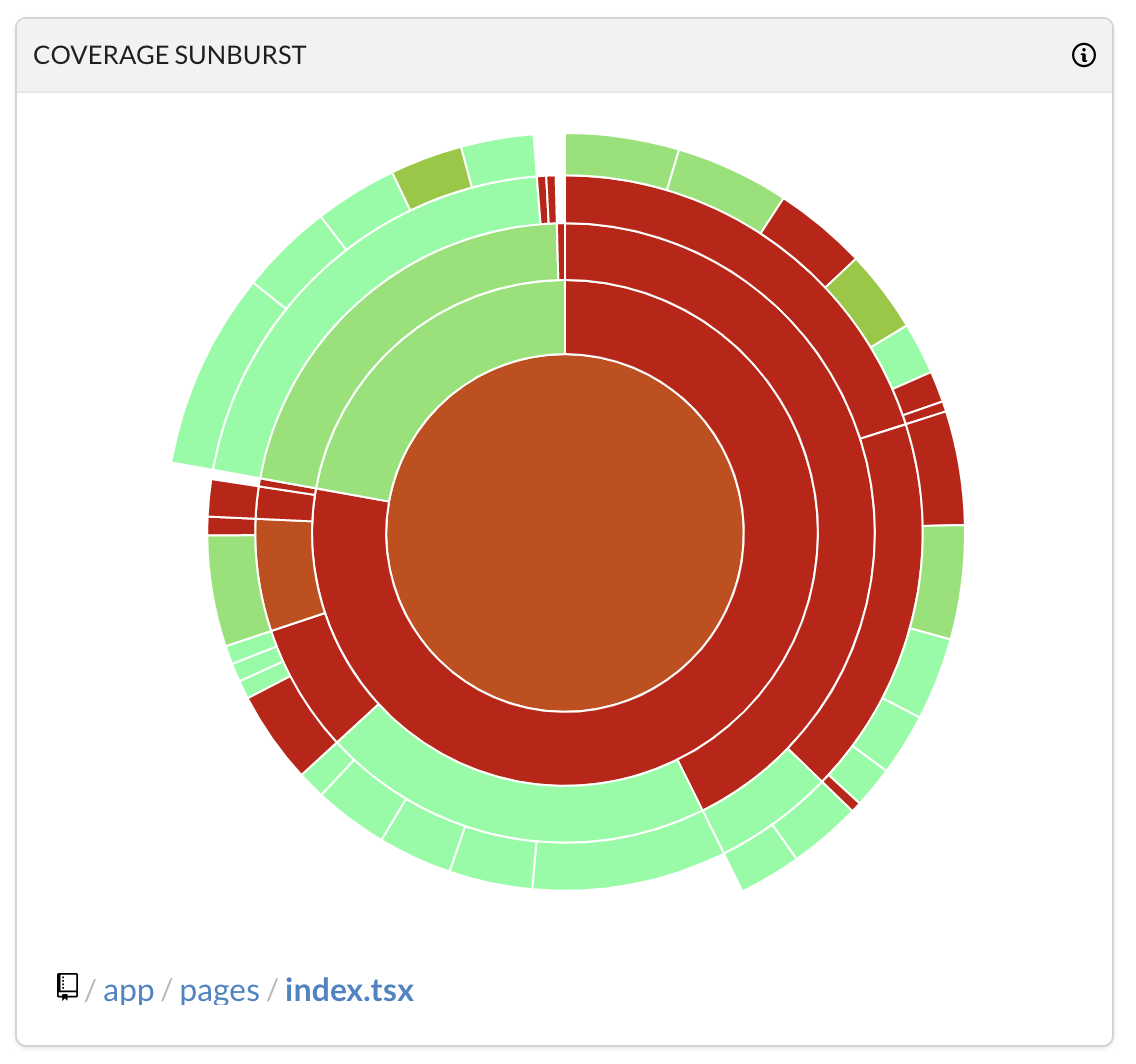Using Codecov within a monorepo
Recently I've been using Codecov as a way of managing and reporting on the test code coverage within my applications which are hosted on GitHub.
One of the great features that Codecov provides is the ability to report across multiple applications within a single repository, and return back a single test coverage percentage.
This article will attempt to show how Codecov can be integrated using a GitHub Action, including how this can be setup for a monorepo approach.
Initial Setup
For tracking the code coverage with Codecov, we can use a GitHub Action which will obtain the coverage, and then post this to Codecov. The below workflow has the following high-level steps:
- Checkout repository
- Install package dependencies
- Run the tests, and produce coverage report
- Upload coverage report to Codecov
name: Code Coverage
on:
push:
branches: [ main ]
pull_request:
branches: [ main ]
jobs:
build:
runs-on: ubuntu-latest
strategy:
matrix:
node-version: [16.x]
steps:
- name: Checkout repository
uses: actions/checkout@v2
- name: Set up Node.js ${{ matrix.node-version }}
uses: actions/setup-node@v1
with:
node-version: ${{ matrix.node-version }}
- name: Install dependencies
run: npm install
- name: Run tests
run: npm run test:ci
- name: Upload coverage to Codecov
uses: codecov/codecov-action@v2
with:
files: ./coverage/coverage-final.json
token: ${{ secrets.CODECOV_TOKEN }}
There is more information about this available on Codecov's website:
https://about.codecov.io/blog/javascript-code-coverage-using-github-actions-and-codecov
Monorepo setup
If we have more than 1 application within our repository, then it's possible we'll also have multiple unit test suites. For example, I have a repository which contains an Next.js app (called app), as well as a basic Typescript app (called actions). These both have their own npm scripts, and produce their own coverage reports.
To include both of these reports in Codecov's coverage, we can adjust the steps in the previous section to the following:
- Checkout repository
- Next.js app:
- Install package dependencies
- Run the tests, and produce coverage report
- Upload coverage report to Codecov with flag "app"
- Typescript app:
- Install package dependencies
- Run the tests, and produce coverage report
- Upload coverage report to Codecov with flag "actions"
This new workflow looks like this:
name: Code Coverage
on:
push:
branches: [ main ]
pull_request:
branches: [ main ]
jobs:
build:
runs-on: ubuntu-latest
strategy:
matrix:
node-version: [16.x]
steps:
- name: Checkout repository
uses: actions/checkout@v2
- name: Set up Node.js ${{ matrix.node-version }}
uses: actions/setup-node@v1
with:
node-version: ${{ matrix.node-version }}
- name: App - install dependencies
working-directory: app
run: npm install
- name: App - Run the tests
working-directory: app
run: npm run test:ci
- name: Actions - install dependencies
working-directory: actions
run: npm install
- name: Actions - Run the tests
working-directory: actions
run: npm run test:ci
- name: Upload app coverage to Codecov
uses: codecov/codecov-action@v2
with:
files: ./app/coverage/coverage-final.json
flags: app
token: ${{ secrets.CODECOV_TOKEN }}
- name: Upload actions coverage to Codecov
uses: codecov/codecov-action@v2
with:
files: ./actions/coverage/coverage-final.json
flags: actions
token: ${{ secrets.CODECOV_TOKEN }}
With this in place, when a new pull request is raised, the Codecov workflow will automatically upload the new coverage reports and compare these to the main branch:

The metrics within the CodeCov will also combine these different coverage reports:

I hope this is of use, please feel free to leave any comments/feedback below!



